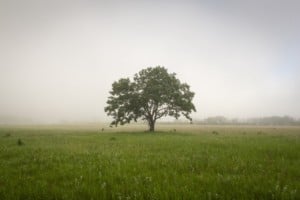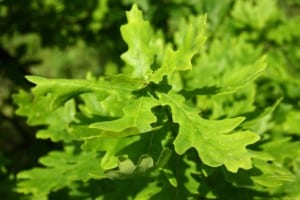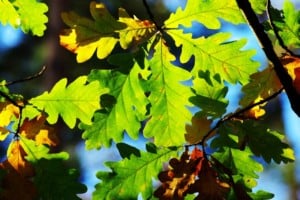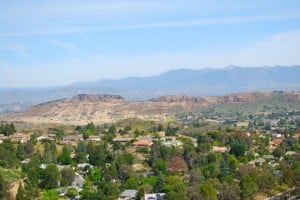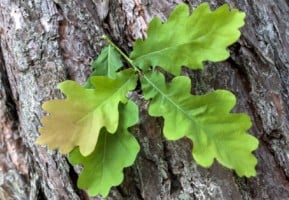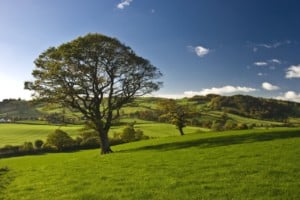The Red Oak, species name Quercus rubra, is native to North America and Canada but has also been introduced to Western Europe, where it is grown in parks and gardens. It’s a medium-sized deciduous tree that is durable and long-lived, but you need to understand all the pros and cons to decide whether it’s worth planting one.
The pros of the Red Oak lie in its ornamental value, attraction for wildlife, shade, fast growth habit, and environmental value. It can absorb pollution from air and water and improve air quality. The cons are that it is vulnerable to fungal and insect infestations, messy, and doesn’t like wet feet.
The Pros Of Red Oak Trees
Red Oaks are stunningly beautiful in the fall and are often planted to attract wildlife to parks and gardens. They grow in a wide range of natural habitats, and their wood is valued for the manufacture of various items.
The Red Oak Is Beneficial To Wildlife
The tree provides shelter and resting places for birds and mammals. Squirrels, deer, insects, birds, small rodents, raccoons, and wild turkeys feed on the acorns. Even bears will eat them. Deer will also browse leaves and twigs in winter, and the dense crown provides welcome shade for wildlife.
The Red Oak Is Fast Growing
The tree typically grows more than two feet a year for just under ten years and can reach a height of one hundred feet, but fifty to seventy-five is more common. The trunk can grow to a diameter of two meters. The Red Oak sprouts readily from stumps of previously cut trees, and the sprouts grow rapidly.
Red Oaks may get too large for smaller residential properties, so keep this in mind when deciding what tree to plant in your suburban garden. The canopy can be forty to sixty feet wide.
The Red Oak Is One Of The Best Shade Trees
The tree has a large open canopy that facilitates its rapid growth. The dense dark green leaves effectively block out the sun in the summer months but drop off in winter. The Red Oak is often planted as a lawn tree, especially in parks and golf courses.
It has an intermediate shade tolerance but does grow in forests in association with other trees like sugar maple, beech, and basswood that are more shade tolerant. It is more shade tolerant than yellow-poplar, black cherry, and white ash trees and falls somewhere in the middle compared to other oaks.
The Red Oak Is Beautiful And Hardy
The Red Oak is an attractive tree that is often planted for its ornamental value. It has a pleasing symmetrical shape, and its leaves turn a brilliant red in the fall. The branching pattern is attractive, and so is the furrowed bark. The tree is often used in landscaping.
The tree tolerates dry and acidic soils well and can survive adverse environmental conditions up to a point. It is one of the best oaks to plant in cities because it tolerates these conditions better than other oak trees.
The Wood Of The Red Oak Is Useful
The wood of the Red Oak is durable and suitable for making furniture, flooring, veneers, and use in general construction. The wood has a distinctive wide grain pattern and is hard but workable. It stains well and sands easily.
Red Oaks Help Absorb Atmospheric Carbon And Other Pollution
Because they are large and long-lived, Red Oaks, like other oaks, absorb significant quantities of atmospheric carbon dioxide. They sequester carbon in their trunks and branches and can absorb air pollution, so they are beneficial for the environment.
Red Oaks Are Easy To Transplant
Their fibrous roots grow near the surface, making them easier to transplant than many other trees. The Red Oak is, therefore commonly available in nurseries and garden shops.
Cons Of Red Oak Trees
Red Oak trees are large, deciduous trees vulnerable to certain fungal and insect pests, which can kill them. Like many deciduous trees, they shed their leaves every year as well as small twigs, acorns, and flowers or catkins. They may be too large for some suburban gardens.
The Red Oak Is Vulnerable To Fungal Disease And Spreads It
The Red Oak is susceptible to a systemic disease called Oak Wilt caused by the Ceratocystsis fagacearum fungus. It is a highly destructive tree disease that can spread quickly, wiping out oak trees in an epidemic fashion. It has no cure and is one of the commonest killers of oak trees in the United States.
The fungus impairs the tree systems that conduct water, and Red Oaks are one of the most susceptible. In fact, they have been blamed for spreading the infection because sweet-smelling fungal mats form under their bark that produces new fungal spores for transmission by insects. The bugs are attracted to fresh wounds in neighboring healthy trees and transfer the spores on their legs, feet, and mouthparts when they feed on the sap.
Red Oaks infected with the fungus seldom survive beyond a few months after they first show disease symptoms. Another fungus called Shoestring Root Rot, or honey fungus, will take advantage of Red Oaks weakened by insects, fire, and drought and infect the tree. It causes discolored foliage, reduced tree growth, dieback of branches, and ultimately, death.
Chlorosis May Occur in Red Oaks
Soils with a high pH are too alkaline and cause Red Oaks to suffer from chlorosis. This is from an iron deficiency that causes the leaves to look yellow while the leaf veins remain green. It is not a healthy look for a Red Oak. The higher pH renders the iron in the soil insoluble, so the tree roots cannot absorb it.
The Red Oak prefers slightly acidic soil but is otherwise not that fussy and has a wide geographical range. It prefers loamy, moist, well-drained soil but will also grow in clay soil and is drought tolerant to a degree.
The Red Oak Is Not Fire-Resistant
Wildfires can seriously damage red Oaks because they kill the cambium at the base, allowing fungi to enter and cause decay. If the fire burns only the tops of the trees, they may sprout and live to see another day.
Red Oaks Are Vulnerable To Insect Attack
Tunneling insects such as carpenter worm, red oak borer, the Columbian timber beetle, and the oak timber worm are common pests that damage Red Oaks. The Gypsy Moth kills the trees in the northeastern US by repeatedly defoliating them. Defoliation also weakens the tree, making it vulnerable to other diseases and insects.
The Asiatic Oak Weevil can seriously hamper the growth of Red Oak seedlings because it presents the tree with a double whammy. The adult insects eat the leaves while their larvae consume the delicate roots.
The Oakleaf Caterpillar, Orangestriped Oakworm, and Browntail Moth also eat the Red Oak’s leaves.
Red Oaks Are Messy
Apart from dropping acorns that can fall from a height and dent a parked car in autumn and winter, Red Oaks shed thousands of catkins in the spring. The catkins contain their flowers. Like other oak trees, they also shed their leaves in autumn, so if you can’t tolerate dried leaves covering your garden, you should choose another kind of tree.
Red Oaks Don’t Like Wet Feet
Red Oaks don’t do well if they are planted too deep or the soil drainage is poor. Overwatering by zealous gardeners also doesn’t do them any favors. They should only be irrigated when young when growing in regions where they naturally occur.

